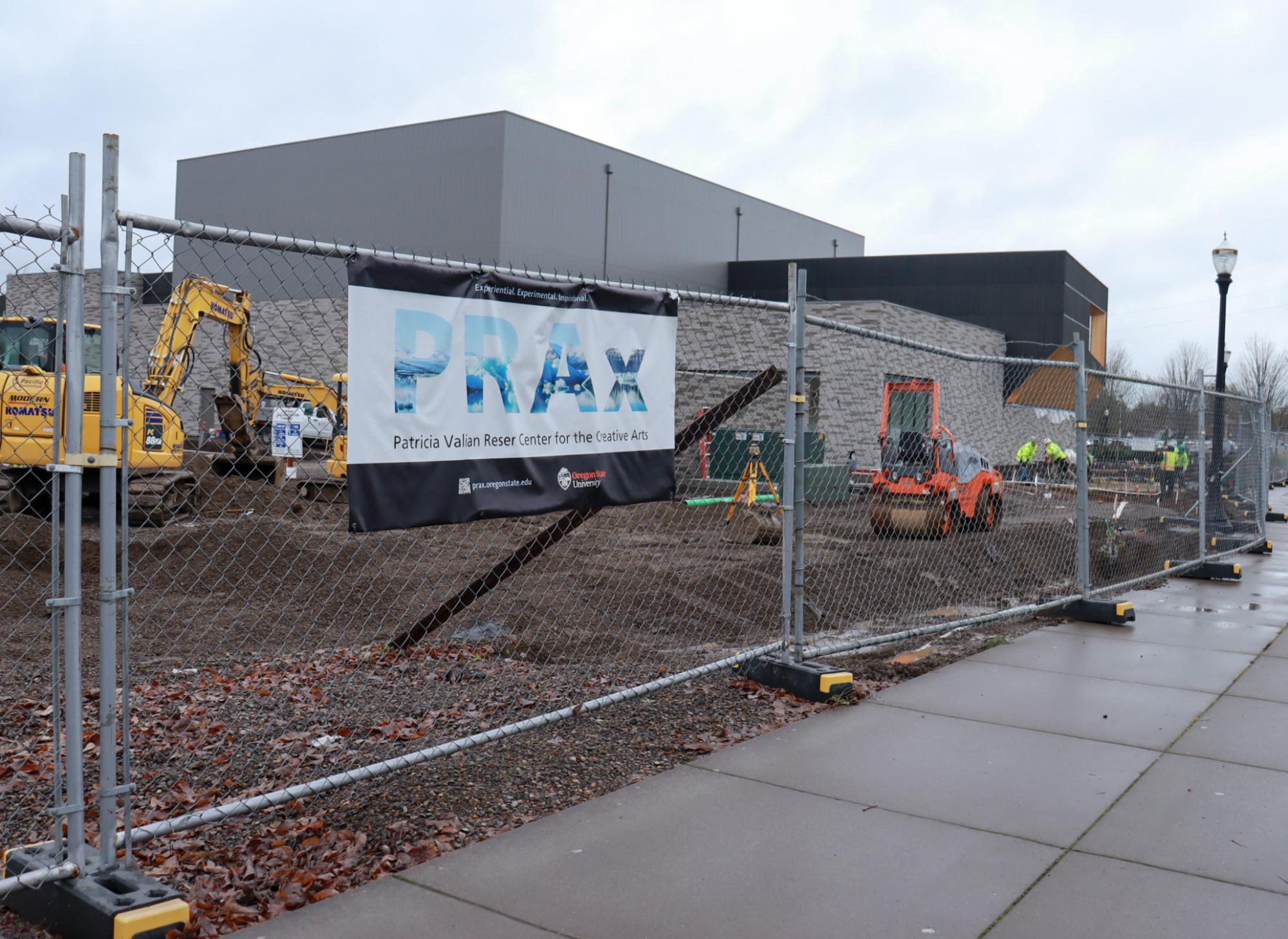“Oregon State University will become a university where every student graduates,” states OSU’s new strategic plan.
Sean Nealon, director of news and research communications at OSU, said the goal is all about how the university approaches student success. OSU’s actual target is 80%.
“We want every student and their family to trust that student success is the university’s highest priority,” Nealon said. “This commitment is more a mindset than a metric – it’s about fulfilling our obligation to our students to do everything we can to ensure their success.”
This is only part of OSU’s new strategic plan, which marks a shifting focus towards key university specialties, research prowess, student success and sustainable growth.
University leaders gathered for the investiture ceremony Nov. 17 to celebrate the announcement of the plan, which had been in development for at least a year, according to Associated Students of Oregon State University President, Carissa O’Donnell.
Figures such as O’Donnell and Kirk Schueler, chair of the OSU Board of Trustees, introduced the investiture ceremony as the date of President Jayathi Murthy’s official installment as president.
Murthy took the podium at the event to explain how her family history led her to where she is, and what she would aim to do here.
One program Murthy introduced was OSU’s new financial aid initiative, “Finish in Fall,” which is intended to help financially insecure students be able to graduate in four years.
Murthy also affirmed her commitment to students and faculty, and explained the role of the soon-to-be-finished Patricia Valian Reser Center for the Creative Arts, in the collaboration between the arts, humanities and science.
“We will focus on big solutions,” Murthy said at the event. “We will push the boundaries of human knowledge.”
O’Donnell explained that the PRAx Center would, among other things, be a location for academic speakers, comparing it to a TEDx Talk stage.
Murthy’s strategic plan identifies four target areas: climate science, clean energy technology, robotics and integrated health and biotechnology, areas in which OSU already has considerable strength, Nealon said.
“In that way, these do not constitute a major shift in priorities, but we do intend to build greater distinction and focus in all four of these areas across the university,” Nealon said.
Related fields of study, such as artificial intelligence and data science, will also receive attention as the university strives to build an interdisciplinary approach and connect fields from science to even art to its target areas.
“I believe a concentrated focus on the three strategic goals will cultivate continuous improvement across the entire university,” said Thomas Doyle, OSU director of environmental health and safety, who attended the investiture ceremony.
To boost research in these areas, OSU plans to increase research spending by almost 30% to a total of $600 million, and recognize faculty excellence with awards and support for tenure-track hiring.
O’Donnel said these funding platforms are also going to be attracting better researchers when they see these funding platforms.
“I think it’s a very competitive offer for professors out there,” O’Donnell said.
O’Donnell also said the new spending could lead to more research opportunities for undergraduates.
“As ASOSU president, I sit on the university president’s cabinet and then a bunch of different committees that have kind of been discussing the strategic plan and analyzing it from different aspects,” O’Donnell said.
Her main concerns were about one of the major points of the plan: doubling Ecampus enrollment. O’Donnell wanted to address how that would affect the student fee and student resources such as childcare, and how the university could equitably distribute those resources.
According to O’Donnell, the Ecampus expansion is largely meant to sustain and fund Corvallis campus while staying affordable.
“OSU has one of the highest ranking online programs in the U.S., so we are particularly well positioned to expand our impact by growing the number of online programs and enrollments,” Nealon said. “The demand for online academic programs continues to grow.”
O’Donnell said a lot of funding will have to go towards Ecampus at first so they can upgrade their infrastructure to accommodate the new students.
Professors will also have more improved studios, O’Donnell said, so they can film lectures.
“That also strengthens Corvallis’ academics,” O’Donnell said, “in the sense that we now have the opportunity to let you look at these lecture videos.”
Many in-person courses have already been utilizing Ecampus videos.
“I’m excited to see all of that play out,” O’Donnell said.


















































































































